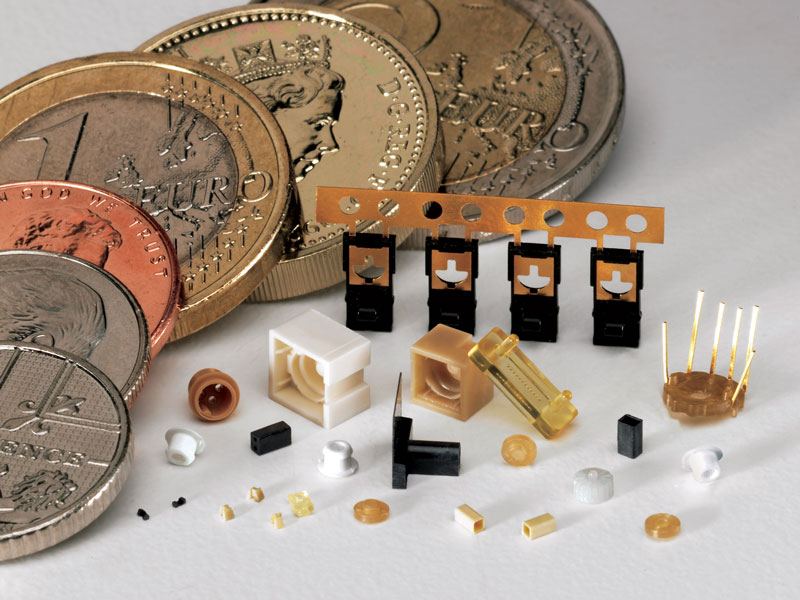COMPANY
INSIGHT
Corporate Profile
Accumold began more than 30 years ago with an idea that there had to be a more efficient way to produce small and micro-sized plastic molded parts. The services that were available at the time proved to be insufficient to handle this new demand for high-precision, micro molded components. This challenge in 1985 sprouted Accumold in to action and the first truly dedicated micro molding machine was developed.
In the mid-1980s the micro-electronics boom we know today was still in its infancy. Accumold was ahead of the curve but could see the wave of demand that devices were getting smaller and smaller by the generation. This head start gave the company a huge advantage in perfecting the art and science of micro injection molding. Along the way the company grew and expanded. From their rented garage to the state-of-the-art facility they call home today Accumold has become a world-class molder.
As was in the beginning, Accumold’s single focus is still dedicated to micro molding. The company’s innovations over the years have continued to push the limits of micro plastics. Their expertise in producing complex, tight tolerance and micro-sized moldings is second to none and is sought out by design engineers and development teams worldwide.
Micro Molding
Accumold defines micro molding in one of three ways: micro in size, micro in features, or micro in tolerances. In many cases the company produces parts that include all three definitions! The rule of thumb is, if you’re current supply chain is baulking at the small size and complexities of a desired part, then it’s probably a micro mold.
Accumold micro molded parts range from “larger” parts at about 5cm in size, with micro features, to molded pieces that measure less than 1mm in total length. This process can produce parts for prototyping and development to many millions as needed.
OUR CUSTOMERS RANGE FROM INDIVIDUAL DOCTORS ALL THE WAY TO LARGE INTERNATIONAL MEDICAL DEVICE FIRM

Lead Frame & Insert Overmolding
In addition to small and micro-sized plastic molded parts Accumold’s micro molding process is capable of molding on or around all sorts of delicate media. Plastic can be overmolded on metals, other plastics, fabric, glass, flex circuit and a wide variety of other materials. The general rule is; if the overmolded item can withstand the temperatures and pressures of molding, and it can be held properly in the mold, it can be overmolded.
This process can be advantageous when looking to reduce other manufacturing processes. Overmolding can eliminate other assembly processes, reduce form factors, or provide a more robust component. All of these factors can be critical, especially when looking to shrink a device or increase efficiency in manufacturing.
Automation
Hand-in-hand with overmolding is automation, especially when it comes to high volume output. Accumold’s dedicated automation team produces custom micro manufacturing cells to handle, inspect, or package all sorts of micro components. This process is also capable of some light, sub-assembly work as well. Accumold’s engineering team provides “manufacture ready” components to their customers though these unique and specified solutions.
Materials
True micro molding can produce complex and high-quality molded parts from a wide variety of engineered thermoplastics. Accumold’s experience includes the molding of complex resins like PEEK, PEI (Ultem®), and LCP. With over 30 years of experience processing these and other highly-engineered resins Accumold’s expertise expedites the design for manufacturability process when working through the micro capabilities of each material choice.
Facility
Accumold is currently running 160+ Micro-Molder®, Vertical and Conventional presses in its 130,000 ft2 (12k m2) facility. The factory includes six Class-8 and three Class-7 clean room manufacturing spaces. As part of the company’s risk mitigation program the facility also includes 26,000 ft2 (2400 m2) hardened structure with dedicated and redundant resources. Accumold is also ISO 13485, 9001 and 14001 certified.
Markets
Micro Electronics, Medical, Micro Optics, Sensors, and other emerging technologies.